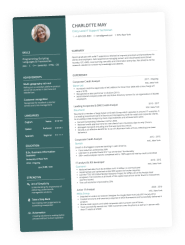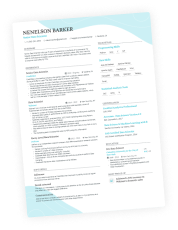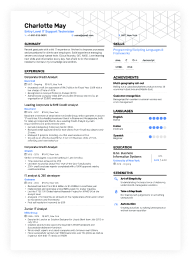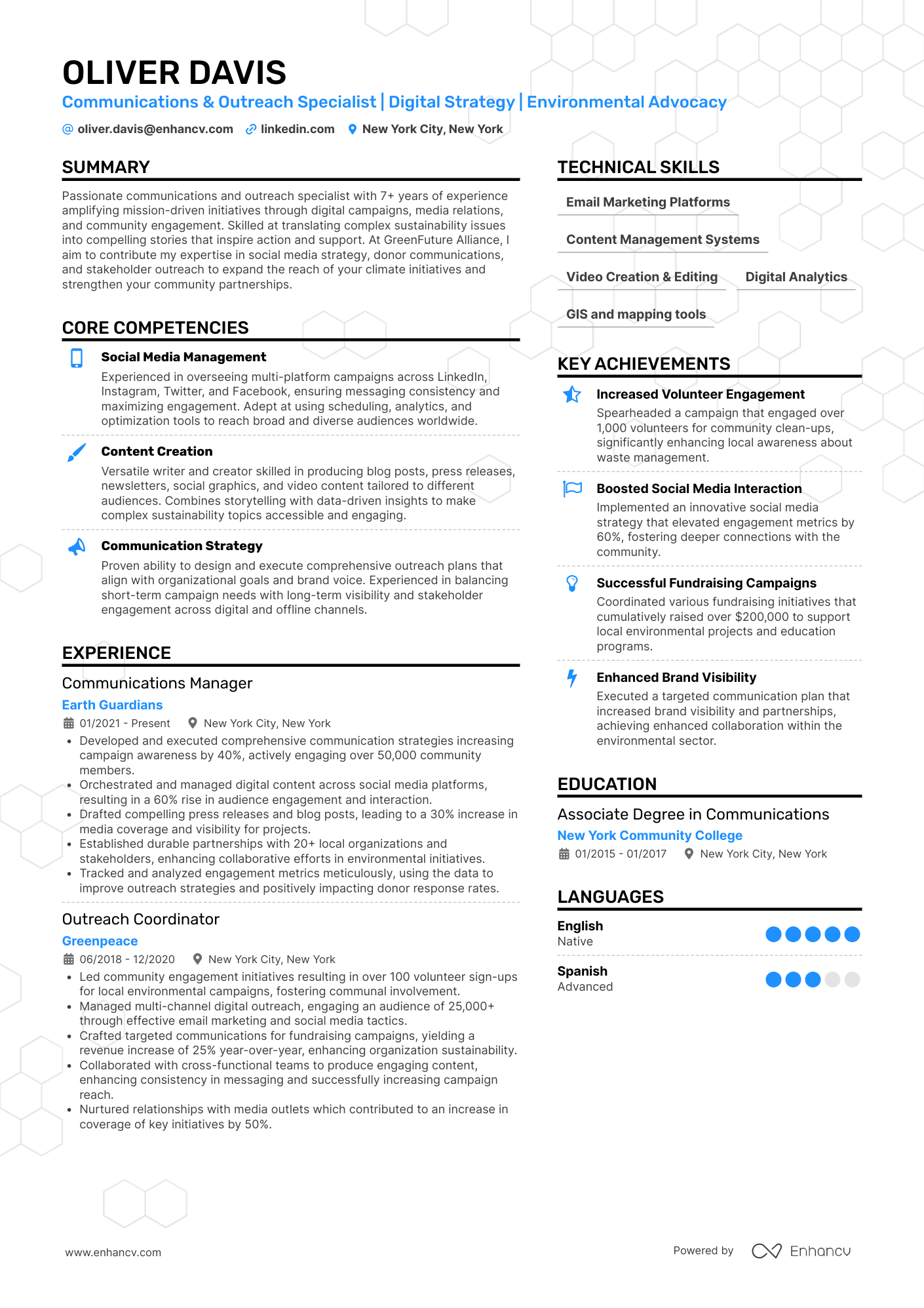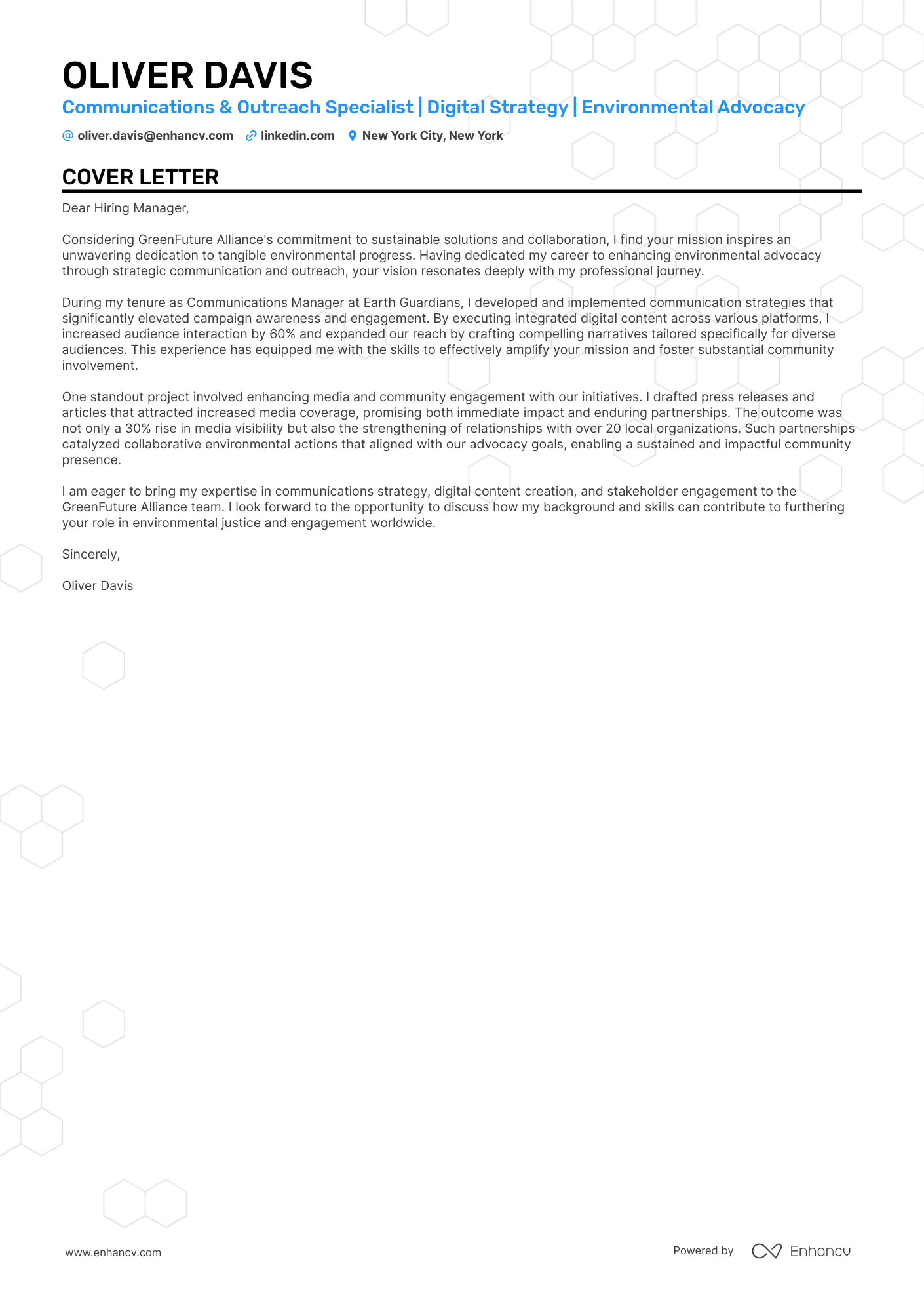There’s this one company. They’re doing some really cool stuff. Sometimes you catch yourself daydreaming about working there, pouring your passion and groundbreaking ideas into meaningful projects.
Unfortunately, they haven’t posted any job openings recently. It looks like you might be in for an indefinite wait until something becomes available.
What if we told you there’s a way to get on your dream company’s radar? You see, in today’s hyper-competitive job market, simply applying to open positions isn’t always enough. Sometimes you have to take things into your own hands.
This is where the so-called unsolicited resume comes in. In this guide, we’ll explore everything you need to know about it: what it is, why it works, and when to send one.
Key takeaways
- Sending an unsolicited resume is a proactive strategy to get noticed by a company.
- Without a job description to guide you, tailoring your resume requires research and even some guesswork.
- It’s best to explain in an email why you admire the company and how you could potentially bring value.
- Don’t be discouraged by rejections and non-responses. You’re planting seeds that could lead to future opportunities.
- Some employers are highly impressed by proactive job applicants and are willing to give them a chance.
What is an unsolicited resume?
An unsolicited resume is one that you send to a company or a recruiter without a specific job opening being advertised. You initiate contact based on your genuine interest in the organization and their mission rather than responding to a posted listing.
An important point about “cold” resumes is that they don’t target job descriptions—they target employers. This means you must anticipate an organization’s goals and needs to tailor your content accordingly.
When compared to a regular resume, there are lots of facets to be mindful of.
Let’s break them down:
Key differences at a glance
| Regular resume | Unsolicited resume |
|---|---|
| Sent reactively | Sent proactively |
| Recipient is expecting applications | Recipient may be surprised |
| Tailored to a specific role | Tailored to a company |
| Moderate level of personalization | High level of personalization required |
| Emphasis on candidate’s specialty | Emphasis on candidate’s adaptability |
| Highlights core skills | Highlights broader skill set |
| Tone is formal and job-description-driven | Tone is initiative-driven and persuasive |
| Cover letter explains how you meet job criteria | Cover letter pitches alignment with goals/values |
| High competition from other applicants | Low direct competition/may not be hiring |
| Follow-up often guided by hiring process | Follow-up may require proactive outreach |
| Response expected after early-stage application | Response rate is unpredictable |
With both, the goal is to earn an interview opportunity.
But here’s the twist—an unsolicited resume supports an additional objective.
Keep this perspective in mind:
If you’ve decided to approach a company directly, you might be somewhat emotionally invested in the idea of landing a role with them. But just like with applying for a job the regular way, it’s best to manage your expectations.
In this particular case, you already know there's no active job posting, so it's safe to assume the company might not be hiring at the moment.
I’m not pointing this out to extinguish your enthusiasm, but to remind you that your unsolicited resume serves another important purpose:
To start a relationship with an organization you admire.
By stepping forward first, you’re positioning yourself as more than just a job seeker—you come across as a purpose-driven professional. And that’s not something to be underestimated.
Doroteya Vasileva, CPRW
Is sending an unsolicited resume appropriate at all?
It’s not unusual to feel like an impostor in these kinds of situations. In some cases, cold-approaching an employer is perfectly acceptable. In others, not so much.
Sending a resume out of the blue and getting noticed can work in a few real-world contexts.
Scenarios where unsolicited resumes are effective
- An employer is known for consistently hiring talent, even if roles aren’t posted publicly.
- Following a networking event, where interest in your profile may have been hinted at.
- For niche or highly specialized roles, where opportunities are rare but your expertise may align with long-term needs.
- Applying to a smaller company that's unlikely to use ATS.
- Contacting a recruiter who has a professional relationship with the organization you’re targeting.
Sometimes, there are certain signals that an employer might welcome unsolicited applications.
Signs that a company might be open to hiring
- Website has a careers page/general careers email
- Recent career-related social media posts
- Company is expanding/opening new offices
- News they’re receiving funding (especially common in startups)
- Many new hires show up on their LinkedIn page
PRO TIP
Another important factor to consider is timing. It’s wise to research typical hiring timelines for your field and aim to submit your resume ahead of those peaks. For example, accounting firms often hire in the fall, while education roles tend to open up in the spring.
However, an unsolicited application isn’t always a good idea. In fact, some companies explicitly discourage it.
Avoid cold-approaching these:
Government agencies
- Examples: Ministries, embassies, public universities, and local councils.
- Why it's a bad idea: Public sector jobs typically require applying through standardized, competitive processes. They often have legal obligations to advertise open roles. An unsolicited application would be a nuisance.
Large corporations
- Examples: Fortune 500 companies, multinational banks, and government contractors.
- Why it's a bad idea: These organizations usually have strict HR protocols and rely on applicant tracking systems (ATS). Unsolicited resumes would most likely never reach the right person or could be automatically discarded.
Highly competitive creative industries
- Examples: Film studios, publishing houses, music labels, and fashion brands.
- Why it's a bad idea: These fields often rely on personal networks, internships, and referrals. Blind outreach without context or a warm intro is rarely fruitful.
The advantages of an unsolicited resume
Despite the challenges, an unsolicited resume raises some green flags for you.
Such as:
Demonstration of genuine interest:
Admiring a company and being the first to make a move signals initiative and strategic thinking—traits most employers appreciate in candidates. This approach can be especially powerful with mission-driven organizations, or startups where intrinsic motivation and values matter as much as experience.
Standing out in a competitive job market:
It’s almost as if you’re saying, “I’m not waiting for the right opportunity—I’m creating it, and I bring tons of value.” This kind of confidence can immediately set you apart from other candidates who’d only take the traditional route of finding a job.
Gaining exclusive access:
This proactive strategy can open the door for you to opportunities that may never make it to a public job board. Some organizations keep tabs on exceptional professionals for future roles. By approaching them first, you might impress the employer to the point of becoming a top candidate.
Unsolicited resume example
We used Enhancv’s AI-powered Resume Builder to create this example resume. If you read the content carefully, you’ll notice that it targets an environmental NGO.
Alright, so what’s special about building such a resume?
Preparation checklist for an effective unsolicited resume
Before you write a single word, you need to take a step back and do your homework. Here at Enhancv’s blog, we’ve discussed at length what makes a good resume. But as we established earlier, an unsolicited resume differs from a regular one.
Creating one requires a separate strategic approach. So, where do we begin when there’s no formal job description to target?
1. Study the employer
It’s crucial to understand in-depth the organization you want to impress. This way, you’ll gain valuable insights that'll help you develop your application’s narrative.
Your aim is to figure out their:
- Goals and needs
- Main challenges
- Mode of operation
- Business direction
- Culture and values
- Language and tone
- Ideal type of employee
Here’s how to research the company
- Visit their website: See their About, Careers, Mission, and Product pages. It’s where you’ll obtain tons of information.
- Read blog posts, news, and press releases: Look for trends and product updates. Use Crunchbase or Google News to see what they’ve been up to.
- Follow their social media: Especially LinkedIn, Instagram, Facebook, and X. It’s one of the best ways to see what they’re busy with right now.
- Check employee profiles on LinkedIn: Be mindful of roles, culture cues, and growth patterns.
- Look at Glassdoor or Indeed: You might gain insights into culture, values, and management.
- Watch interviews with leadership figures: Write down quotes or goals to reference in your pitch.
- Review their competitors: Try to understand their positioning and what makes them unique in the industry.
Take notes along the way—they’ll come in handy later when you start writing your content.
Remember, this isn’t just about being informed. Your main focus is to identify signals that'll help you tailor your resume.
PRO TIP
As you conduct your research, you should actively look for a relevant contact. This will be the person you can later address directly in your outreach email and cover letter to add a personal touch to your application. Look for someone in the department you want to work in—a hiring manager, team lead, or department head.
2. Define your value proposition
When you understand what the employer is all about, it’s time to clarify what you bring to the table—and why they should care.
This is where your value proposition comes in. It’s a compelling statement about how your skills, experience, and personality can contribute to the company’s goals.
It doesn’t need to be flashy and grandiose—it just needs to be clear and relevant.
How to define your value proposition
| Follow these steps |
|---|
1. Reflect on your most impactful professional accomplishments: These could include:
|
| 2. Match your strengths to their likely needs: Based on your research, think about what this company might be struggling with or striving toward. Use your experience to show them that you get it. Hopefully, you’ve already been through something similar. |
| 3. Make it personal: Your value proposition should reflect why this company fascinates you, and why now is the perfect time to become acquainted. For example: “I help renewable energy companies turn complex engineering solutions into clear, investor-ready stories—and with [Company Name] expanding into offshore wind, now is the ideal moment to put that expertise to work for you.” This tells them exactly what you’re offering and who it’s for. |
| 4. Weave this value statement throughout your content: It should make its way to your resume summary, influence your work experience bullet points, and show up in your cover letter. When done right, it turns your unsolicited resume into a well-aimed pitch. |
3. Decide on the right resume format
When making an unsolicited resume, the best practice is to establish its structure first, then write it.
Choosing a resume format before writing allows you to:
- Arrange your content around the type of story you want to tell.
- Prioritize the most relevant information based on what the format emphasizes.
- Avoid wasting time writing sections that won’t even make it into the final resume.
How do you choose it then?
This depends on your specific circumstances, such as your career stage, the industry you work in, and the type of organization you’re approaching.
Let’s go over the main resume formats and see how they relate to an unsolicited application.
Hybrid format
The hybrid resume format is good for an unsolicited resume because it nails two key goals:
- It commands attention immediately because it leads with your most impressive accomplishments and relevant skills.
- It establishes credibility by detailing your work history and career progression.
This format is perfect for targeting a company rather than a role because it allows you to lead with value while still offering the structure hiring decision-makers expect.
Use this format if you’re:
- A professional with a broad skill set who can fit into several roles.
- Seeking to display transferable skills without downplaying your career history.
- Targeting a new industry.
Key resume sections:
- Summary
- Skills or Areas of Expertise
- Selected Achievements
- Work Experience (most relevant roles)
- Education / Certifications
A classic resume is also a valid option in certain scenarios.
Reverse-chronological format
The reverse-chronological resume format is the most traditional one—listing your most recent job first, and moving backward. It's familiar to recruiters and works well when your experience naturally aligns with the company’s likely needs.
Use this format if you’re:
- Staying in the same industry or job type.
- A professional with a steady career progression.
- In a field where work history is the strongest proof of ability (e.g., law, academia, finance).
Key resume sections:
- Summary
- Work Experience (reverse-chronological)
- Skills
- Education / Certifications (reverse-chronological)
There’s one more option to consider.
Functional format
A functional resume format focuses on skills rather than experience—grouping your competencies into skill categories.
Use this format if you’re:
- Able to fit into multiple roles.
- An early-career professional or a career changer.
- Lacking a linear background or having gaps in your employment.
- Reliant on highly specialized skills, but don’t have formal experience.
Key resume sections:
- Summary / Objective
- Skill Categories (with examples under each)
- Brief Work History (optional)
- Education
When you’re finally done with all the prep work, you can start working on your actual resume.
You know what they say, appearances matter.
Formatting and design tips for unsolicited resumes
It’s crucial to make your resume inviting and easy to read, so let’s go over some well-established formatting and layout choices that support clarity, readability, and impact.
Visual best practices for an effective unsolicited resume
| Here’s what we recommend |
|---|
Resume length and layout:
|
Visual hierarchy:
|
Fonts and font sizes:
|
Colors and icons:
|
File format and name:
|
Now let’s move on to detailing your professional competencies.
How to write an unsolicited resume
To make a standout resume for an unsolicited application, you need to take full control of the story you’re telling.
When opened, it needs to do three things right from the start:
- Grab attention
- Communicate relevance
- Make them want to learn more about you
Here we'll walk you through how to write a resume that does exactly that.
Lead with a tailored summary
Without a clear role, your resume summary needs to make it instantly obvious where you fit. It's your chance to show your value before the reader starts scanning your document.
In three or four lines, explain:
- Who you are professionally
- What you’re great at
- Why this company should care
Here’s how to write it well:
- Address their values or mission: If they’re focused on, let’s say, sustainability, innovation, or inclusivity—echo those themes in your summary.
- Use outcome-based language: Explain how you drive results, not just what you do.
- Mention the company: Naming them shows your outreach isn't part of a mass application.
Here’s an example we created with Enhancv’s Summary Generator:
Emphasize relevant skills and strengths
With an unsolicited resume, you have to anticipate what the employer values and lead with skills that match their direction.
This is where you show exactly how your strengths could be useful to them.
Here’s how to do it:
- Use a Key Skills or Core Competencies section: List several technical skills or areas of expertise that are relevant to the company’s field or product.
- Focus on transferable and future-facing strengths: Because they haven't defined a role, your transferable skills should be broad enough to cover multiple potential fits—but still point to a general area of expertise.
- Give examples of achievements: If possible, connect each skill with a measurable result you’ve delivered.
Example:
Keep your work experience relevant and strategic
An achievement-rich work experience section will help the employer envision you as part of the team.
Here’s how to structure it effectively:
- Use reverse-chronological order: Lead with your most recent position and move backward. Focus on the jobs and outcomes that are most likely to resonate with them.
- Prioritize relevance over length: If a past role directly relates to the company, expand it. If it doesn’t—skip it.
- Detail achievements, not duties: Each bullet point should describe what you accomplished, not just what you were responsible for.
Example:
- •Developed and executed integrated digital marketing campaigns that increased qualified leads by 42% year-over-year.
- •Led a cross-functional team of 8 to launch a new product category, generating $1.2M in revenue within the first 6 months.
- •Implemented data-driven content strategy that boosted organic traffic by 65% in under a year.
- •Oversaw construction of 15+ sustainable commercial projects, all delivered on time and under budget by an average of 8%.
- •Negotiated vendor contracts resulting in $350K annual cost savings without compromising quality standards.
- •Introduced a new workflow management system that improved team productivity by 25%.
Show relevant education and certifications
Whether you’re early in your career or a seasoned professional, a relevant education section and industry certifications reinforce your credibility and can signal alignment with the company’s direction.
How to make this section count:
- Keep it clean and high-impact: List your credentials in reverse-chronological order, including degree or certificate name, institution, and date of completion.
- Prioritize relevance over quantity: Focus on education that connects with the company’s field or mission and technical skills they might value.
- Include ongoing learning: If you’re taking a relevant course right now, list it. It shows initiative and growth, which matches the proactive nature of unsolicited outreach.
- Optimize the structure: Group-related certificates under themed headings (e.g., “Marketing Certifications”).
PRO TIP
If the company is in a regulated or certification-heavy industry (like healthcare, finance, or legal), listing the right certifications can make you noteworthy even if you’re applying speculatively.
Example:
We’re not done yet. There’s a lot more we can do to make your resume impressive.
How to tailor an unsolicited resume
When approaching an employer in this fashion, personalization is non-negotiable. You’re going to put all that research you did to good use once again.
Here we’ll go beyond the basics. This section focuses on the subtle, next-level touches that can take your resume from “well-written” to “this person understands us.”
The goal here is to signal:
- Cultural alignment
- Attention to detail
- Genuine interest
This is where the magic happens.
1. Mirror the company’s tone and language
One of the best ways to make your resume feel like a perfect fit is to speak their language.
Every organization—be it a startup, a nonprofit, or a global tech giant—has a distinct communication style. And when your resume matches that voice and tone, it tells them you’re already vibing.
Here’s how to figure out their tone:
- Scan their website and careers page: Do they use casual phrases like “we’re obsessed with this” or more formal ones like “we strive to deliver value”?
- Check how they write on social media and LinkedIn: Are they using emojis and GIFs? Or precise, corporate announcements?
- Look at how employees describe their work on LinkedIn: You’ll quickly spot patterns in phrasing, values, and keywords.
- Read their job listings (past or present): These are often goldmines for vocabulary and attitude.
Then, reflect that tone in your resume.
What to mirror:
- Tone level: Is it professional and formal, or friendly and casual?
- Vocabulary: Are they using lots of technical jargon, emotional phrasing, or mission-focused words?
- Values cues: Words like “ownership,” “empathy,” “excellence,” or “impact” should be carefully placed in your summary and bullet points if they matter to the employer.
Let’s say you’re working on your summary.
If the company feels fun, fast, and informal, then you can write:
“Creative problem-solver who loves building cool things that make people’s lives easier. I thrive in fast-moving teams and have zero fear of pivoting mid-sprint.”
If the company is technical and product-focused:
“Full-stack engineer with a track record of shipping scalable features in fast-paced environments. I prioritize clean code, rapid iteration, and cross-functional collaboration.”
If the company is corporate or conservative:
“Result-oriented marketing professional with 7+ years of experience driving growth in complex, data-driven organizations. Focused on performance, clarity, and long-term strategy.”
If this type of content tailoring puzzles you and you’re not the most confident writer, don’t be afraid to leverage AI to write your resume.
2. Reference their product, mission, or recent news (sparingly)
Referencing something specific about the company can go a long way. It shows you’ve been paying attention, and that your interest is genuine.
But here’s the catch: do it sparingly.
Overloading your resume with references can come across as forced or desperate. Meanwhile, a well-placed acknowledgment is more impactful than tons of praise.
What you can reference:
- A product you’ve used or followed.
- A mission statement or value you align with.
- A recent launch, funding round, or initiative.
- A community, cause, or social impact effort they’re involved in.
- Industry recognition (e.g. podcast, article, award).
You can include such references in your summary, work experience, or even better—your cover letter.
Examples:
From a summary for a fintech startup:
“Inspired by [Company]’s approach to simplifying personal finance, I’ve focused on building UX flows that make complex tools feel invisible.”
From experience bullet points for a climate-focused company:
“Deeply aligned with your mission to reduce carbon impact through design—my last project helped cut waste in global supply chains by 12%.”
3. Use their job titles
You see, companies often use specific terminology to describe their roles. Sometimes it’s done to reflect their culture, sometimes for internal clarity.
Now, this is one of the most overlooked (and simplest) ways to tailor an unsolicited resume. Just match your job titles and language to the company’s own structure.
By once again mirroring their language, you help the hiring decision-makers see where you might fit in.
Why this works so well:
- It makes your resume easier to scan and categorize.
- Helps the reader visualize you in a position they know well.
- Reduces any disconnect between your background and their operation.
Here’s how to find their job titles:
- Check their website’s careers page (even if no jobs are open).
- Search LinkedIn for current employees in similar roles.
- Look through old job listings to see what titles they’ve used in the past.
- Use LinkedIn filters by job function + company name to explore patterns.
For example, if your title was “Client Success Manager,” but the company uses “Customer Experience Lead,” then simply use their version—especially in your headline or summary.
4. Customize section titles to reflect what matters to them
Most resumes include standard section headingslike Work Experience, Skills, and Education. And for good reason—ATS software uses these “labels” to parse applications and evaluate them.
But your resume isn’t going through an ATS, which means you can use this to your strategic advantage. Customizing your section titles can add relevance, personality, and clarity.
Why this works well:
- Draws attention to the most relevant aspects of your background.
- Helps reframe your experience in a way that fits the company’s lens.
- Shows initiative and branding awareness.
Examples of custom section titles
Instead of “Work Experience,” try:
- Growth Marketing Highlights (for a performance-driven marketing company)
- Product Development Experience (for a tech startup)
- Impact in Fast-Paced Environments (for a company that values agility)
Instead of “Skills,” try:
- Core Competencies
- Tech Stack & Tools
- Strengths That Match [Company]
- Capabilities for Cross-Team Collaboration
Instead of “Projects,” try:
- Startup Initiatives I’ve Led
- Campaigns That Delivered Results
- Open Source & Side Projects (if relevant to the company’s culture)
For Enhancv users
Enhancv’s resume templates support custom section names. Use this to your advantage by labeling sections in a way that makes your resume feel like it was built just for this company.
5. Include a video resume (optional)
A video resume can be a powerful way to make a lasting impression. It immediately grabs attention and allows you to directly demonstrate how articulate you are.
It works well in a few instances:
- Roles that require communication skills, such as teaching, sales, or public relations.
- Creative industries like media, marketing, or entertainment.
- Companies known for open-minded, progressive hiring.
Speaking of optional additions, there are a few ways to make your resume richer.
Additional unsolicited resume sections
If you’ve got some space left at the bottom of your document, then perhaps your resume could benefit from one or two additional sections.
Think of them as carefully placed details that add depth, personality, and cultural fit to your application.
Consider these:
- Personal projects: Highlights initiative and creativity outside your main job.
- Volunteer experience: Demonstrates community involvement and a people-first mindset.
- Publications: Shows communication skills and thought leadership.
- Awards: Provides social proof of your impact and excellence.
- Languages: Can be a differentiator for global roles or diverse teams.
- Freelance work: Proves adaptability, ownership, and entrepreneurial drive.
- Testimonials: Builds credibility through third-party validation.
However, with an unsolicited resume, there’s one more addition—and it isn’t optional.
Cover letter for an unsolicited resume
Your cover letter is the bridge between your resume and the reader’s understanding of why you’re reaching out.
Including it with an unsolicited resume is essential because it provides some much-needed context, as the employer might not be anticipating such hiring inquiries.
The short cover letter allows you to:
- Explain why you're reaching out and what interests you about the company.
- If you were referred by someone at the company, you can subtly name-drop them.
- Convey that you understand their mission, culture, or challenges.
- Make a clear case for the value you can bring to them.
- Connect with hiring decision-makers on a personal level.
Here’s an example we created with our free-to-use AI Cover Letter Generator:
It’s best to include your cover letter directly in the body of your outreach email. Hiring managers are busy and they might skip opening your attachment. Still, to preserve formatting, you can include a PDF version just in case.
Best practices for sending an unsolicited resume
If you’ve prepared your documents and you’re ready to send them, then here’s what you should focus on next.
1. Follow the company’s stated guidelines (if available)
Some companies openly welcome unsolicited resumes and even provide guidelines on their careers page.
If you find such:
- Don’t deviate from the instructions: This shows you respect their process and increases the chances your resume reaches the right person.
- Pay attention to the details: Mind what they expect regarding file format, subject line, and whether they request a cover letter or portfolio link.
- Don’t lose hope if you don’t hear back immediately: Submitting through the official channel also means your files may be stored in their ATS for future opportunities.
However, if you’re unable to find such directions, then move on to the next best option.
2. Send a polite email
If the company doesn’t explain how to submit an unsolicited resume, your next best option is direct outreach via email.
Here’s how:
- Address the email to the most relevant contact you could find.
- Keep your message short and respectful, and get straight to the point.
- Explain why you’re reaching out and how your background aligns with the company.
- Attach your resume and cover letter as PDFs, and give your files clear, professional names.
- Include a friendly call to action, such as inviting them to connect or keep your information for future openings.
- Carefully proofread your email before you hit the send button.
PRO TIP
Mind your timing. It’s best to do this kind of outreach when it’s more likely to be noticed. For example, Mondays are usually quite busy at most companies so it’s best to send your email later in the week. Between 9:30—11:30 AM is a safe bet—everyone’s had their morning coffee and they’re not going through the post-lunch energy crash yet.
If you have a hard time imagining an email like this, don’t worry, we've got you covered.
Unsolicited resume email template
Subject: Unsolicited application — [Your Role/Expertise] for [Company Name]
Email body:
Hello [Recipient’s Name],
I hope this message finds you well. I’m reaching out because I greatly admire [Company Name]’s work in [specific area relevant to their mission/industry], and I’d like to explore how my background could contribute to your ongoing success.
As a [your professional title] with [X] years of experience in [key skill/industry], I’ve [insert one measurable achievement relevant to the company’s needs]. I believe this expertise could bring value to your team, even in the absence of a posted opening.
I’ve attached my resume and cover letter (PDF) for your reference. I’d be happy to connect, share more details, or simply remain on file for future opportunities.
Thank you for your time and consideration, and I look forward to the possibility of connecting.
Best regards,
[Your Full Name]
[Your Email Address]
[Your Phone Number]
[LinkedIn URL or Portfolio Link]
Use LinkedIn as an additional outreach channel
You can complement your email outreach through LinkedIn—it can be a powerful tool to make your unsolicited applications more personal and increase your chances of being noticed.
Unsolicited LinkedIn outreach
| Follow these steps |
|---|
| Engage before you pitch: If time allows, interact with the company’s posts or comment thoughtfully on their content before sending your message. This warms up the connection and makes your outreach feel less surprising. |
| Connect with the right person first: Send a short connection request to the person you deem the most suitable contact. Include a brief note about why you’re reaching out—something as simple as, “Hi [Name], I admire the work [Company] is doing in [area] and would love to connect.” |
| Follow up with a concise message: If they accept your request, send a short, tailored message explaining your interest, mentioning your background in one or two lines, and offering to share your resume. Keep it conversational, not like a copied cover letter. |
| Attach your resume or link to it: LinkedIn messages allow attachments, but you can also link to a Google Drive or Dropbox file. If you link, make sure it’s public and clearly named (e.g., firstname_lastname_resume.pdf). |
PRO TIP
As part of your outreach efforts, take a look at your LinkedIn profile and consider if it needs some customization as well. You can easily apply the same tailoring strategies to it as well to better reflect your suitability for the target company.
What to expect after sending an unsolicited resume
When you send an unsolicited resume, responses can vary widely.
Here’s what usually follows:
Potential outcomes
| You should expect |
|---|
| A positive response: A recruiter or manager excitedly reaches out because it turns out they’re totally hiring right now. They eagerly ask for more information, wanting to schedule an interview ASAP. |
| Referral to a future pipeline: You may be told there are no openings now, but that your resume will be kept on file. Fingers crossed for a future opportunity. |
| No reply: Unfortunately, this is common, especially if your message didn’t hit a current need or reach the right person. |
| Unexpected interest: In some cases, companies may not have considered hiring at all. But your message arrived and sparked a new opportunity. A formal interview might be coming! |
Good follow-up practices
Give them time before following up:
Wait for at least seven business days after sending your resume before reaching out again. You need to be patient—give the recipient enough time to review your materials and respond without feeling rushed.
Use the same channel you used initially:
If you sent your unsolicited resume by email, it's best to reply to that original thread. If your initial outreach was via LinkedIn, follow up there for continuity’s sake. It’s fine to switch up the outreach channel after a week has elapsed.
Keep your follow-up short and polite:
Reference your initial message or submission date so they can place you quickly. Somebody might have noticed it but didn’t have the opportunity to reply. You can restate your interest briefly and offer to provide more details.
Be respectful of their time:
Multiple follow-ups in short succession are a bad idea. If there’s still no reply after your follow-up, wait a few months before trying again—ideally, by then you’ll have something new to share (e.g., a recent project or achievement).
How to handle silence or rejection
If you don’t hear back, don’t take it personally and don’t get discouraged. The company may not be hiring, or your resume may have arrived at a bad time.
However, if you receive a polite rejection, thank them and express continued interest. This keeps the door open for future contact.
PRO TIP
Consider silence as a prompt to revisit your approach.
- Did you contact the right person?
- Was your message truly personalized?
- Was your content clearly aligned with the company’s needs?
Each experience is a learning opportunity to improve your approach and messaging.
If you’re willing to be a little bit more persistent and you deem it appropriate, then you can squeeze out some value for yourself even after being rejected.
Here’s how:
- Ask for feedback to gain insight into how your materials were received.
- Stay connected on LinkedIn with the person you contacted.
- Requesting an informational interview is a long shot, but still worth a try.
Common unsolicited resume mistakes
There are the usual resume mistakes and then there are the ones candidates make when sending an unsolicited resume. There are some major pitfalls to be wary of.
Avoid these
- Ignoring the company’s stated application guidelines: If the company lists a specific process for unsolicited applications, not following it can get your resume discarded before it’s read.
- Using a generic or outdated resume: One of the quickest ways to lose a potential opportunity is by sending a resume that’s not tailored.
- Not showing clear value or relevance: An unsolicited resume should answer “Why should this company consider me right now?” If it doesn’t, it’s just background noise.
- Ignoring the company’s values or needs: Failing to address the company’s focus and goals can signal that you’re more interested in any job.
- Being overly persistent or aggressive: Follow-up is part of good outreach etiquette—but repeated emails, LinkedIn messages, or cold calls can easily cross the line.
- Using an unprofessional email or file name: Addresses like “cooldude77@email.com” or filenames like “resume_latest_FINAL2.docx” send the wrong message. Use your name and a clean PDF.
- Weak subject lines in email outreach: A vague subject like “My resume” can get lost in the shuffle. Use something specific, e.g., “Proactive application — UX designer for [Company].”
Conclusion
Ultimately, an unsolicited resume isn’t just about getting hired—it’s about starting a conversationwith a company you admire. With professionalism and persistence, it can lead to unexpected opportunities down the road. Don’t get discouraged right away if you’re not offered an interview from the start.
Make one that's truly you.

